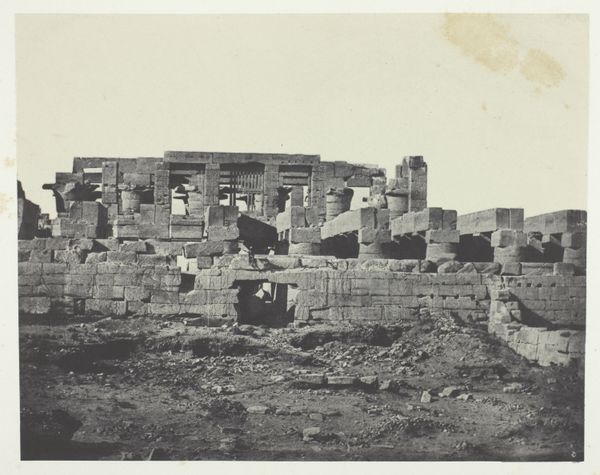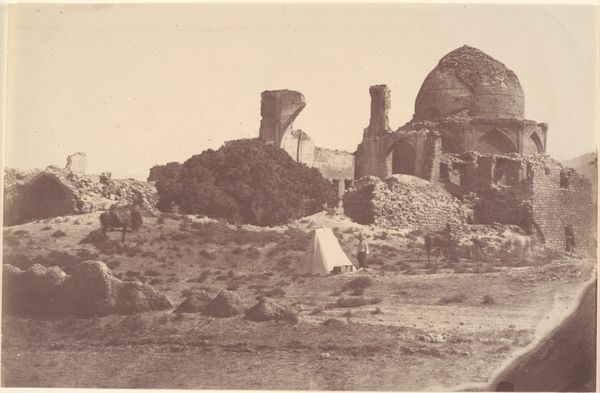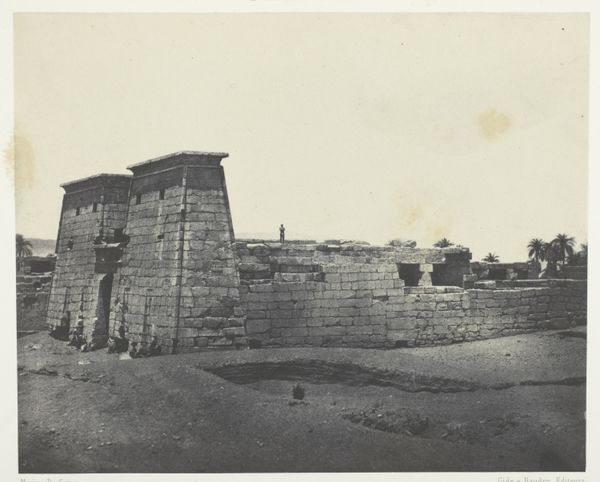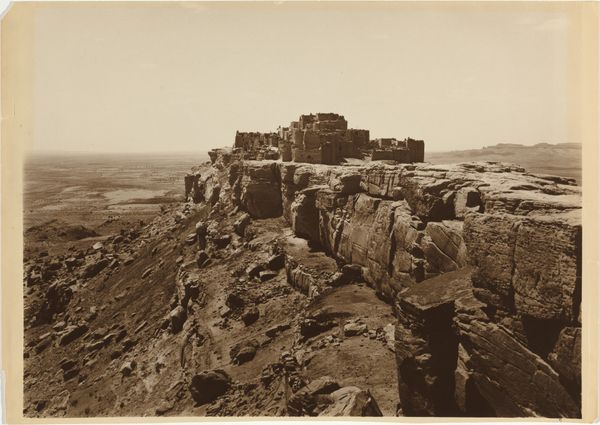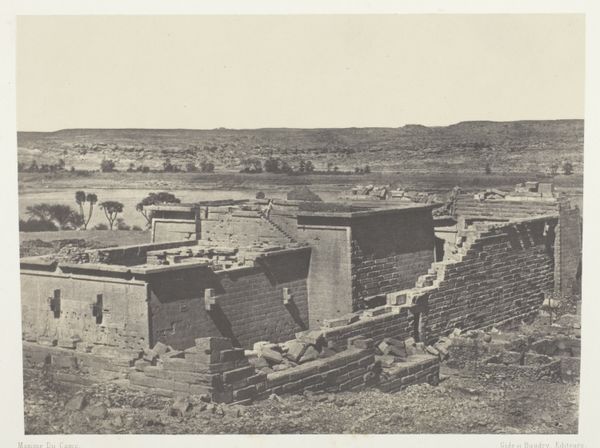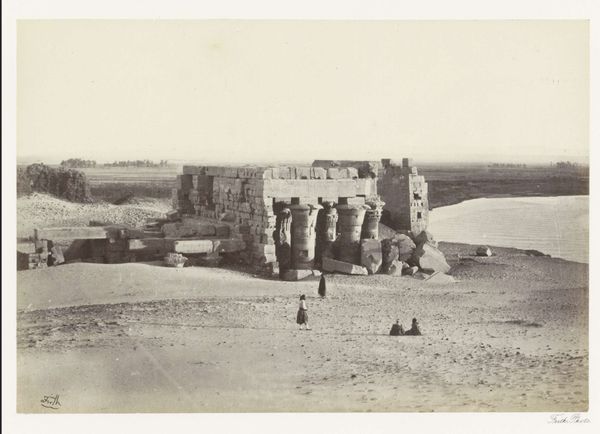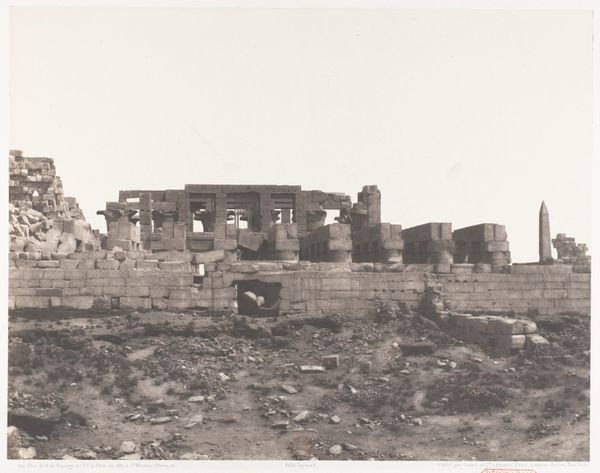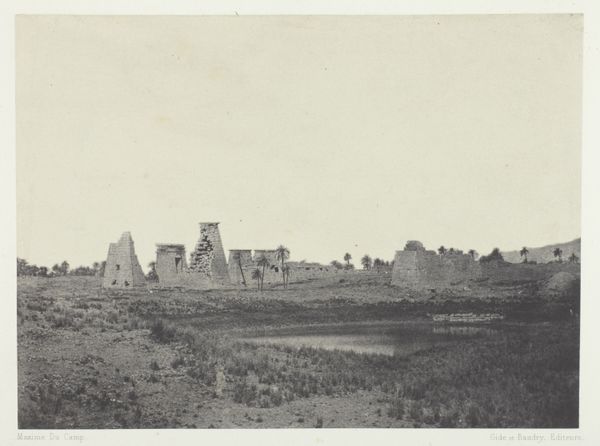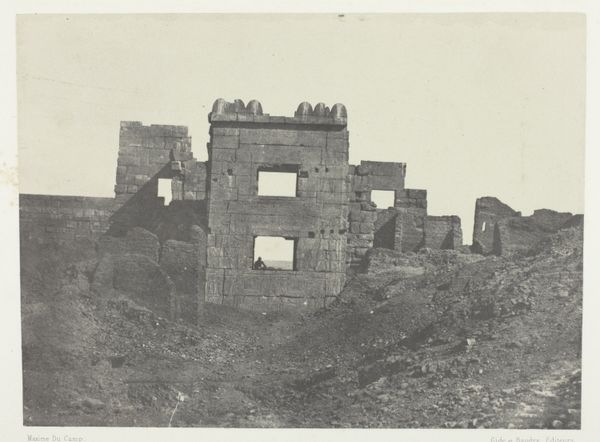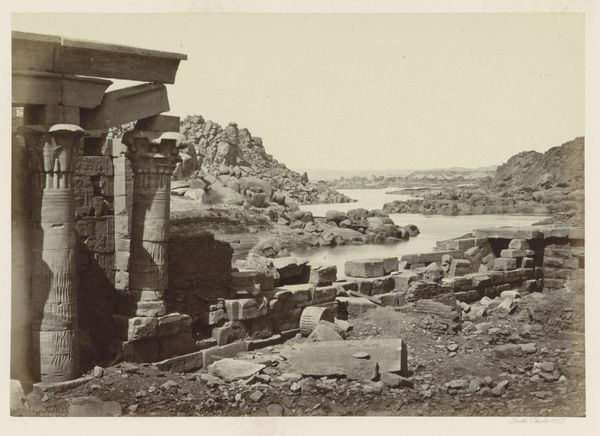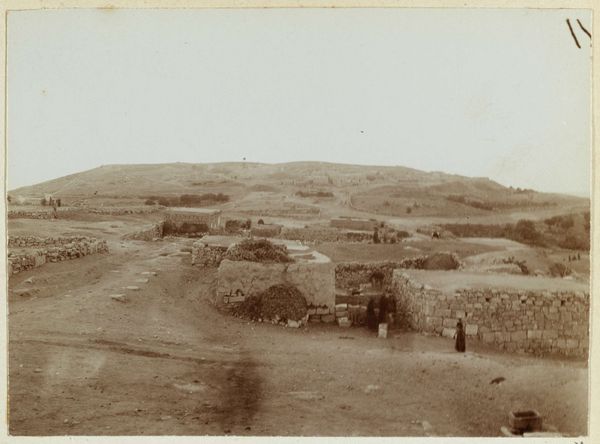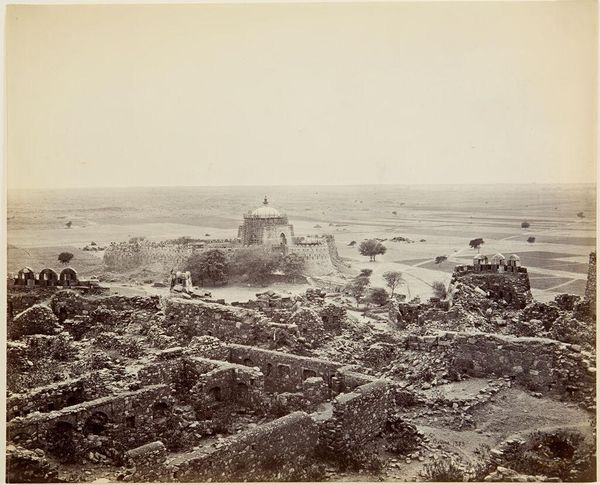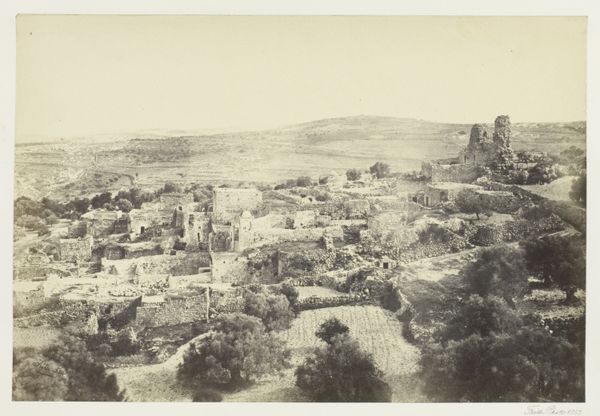
silver, print, photography, gelatin-silver-print
#
print photography
#
silver
# print
#
war
#
landscape
#
outdoor photograph
#
photography
#
ancient-mediterranean
#
orientalism
#
gelatin-silver-print
#
cityscape
#
islamic-art
Dimensions: 15.4 × 22.4 cm (image/paper); 29.8 × 42.7 cm (album page)
Copyright: Public Domain
Editor: This is Francis Frith's "Distant View of Damascus," a silver print from 1857, currently residing at The Art Institute of Chicago. The scene evokes a sense of ruin, almost romantic in its desolation, but what visual elements stand out to you? Curator: The first element that strikes me is the formal structure; note how Frith masterfully uses the composition to create depth. The crumbling architecture serves as a foreground, sharply contrasted against the hazy cityscape in the distance, thereby flattening pictorial space. How does this arrangement influence your understanding? Editor: It's interesting you mention depth, or lack thereof! The limited contrast definitely compresses the space and emphasizes the texture of the ruins. Curator: Precisely! It reduces perspectival depth. Observe also how the light, seemingly diffused and even, plays across the surfaces, minimizing shadows and further flattening forms. In your view, how does this interplay between light and form contribute to the overall aesthetic? Editor: I see what you mean. It de-emphasizes volume, creating a graphic quality, almost like a drawing despite being a photograph. It invites a detailed exploration of texture and structure rather than spatial illusion. Curator: Indeed. Furthermore, the monochromatic palette further underscores these formal concerns. By reducing the scene to tonal variations, Frith draws attention to the subtle gradations of light and shadow within the architecture itself. Have you any other reflections based upon the interplay of line, color and shape? Editor: Yes, and the uniform tonality creates an incredible coherence between the dilapidated forms in the foreground and the architecture nestled within in the background! That hadn't initially occurred to me, and now I see how intentional the choices about light and tonality had to be in capturing the feeling of unity. Curator: Precisely.
Comments
No comments
Be the first to comment and join the conversation on the ultimate creative platform.
